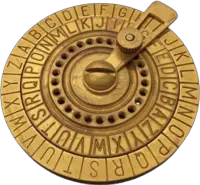The Caesar Cipher, a fundamental encryption technique attributed to Julius Caesar, remains an essential milestone in the history of cryptography. Dating back to approximately 100 BCE, this cipher played a significant role in securing confidential messages during ancient times.
Julius Caesar and Encryption
Julius Caesar, a prominent Roman military general and statesman, sought to protect sensitive communication among his generals and aides during wartime. To achieve this, he employed a rudimentary substitution cipher that involved shifting each letter in the plaintext by a fixed number of positions in the alphabet.

The Cipher Technique
The Caesar Cipher, also known as a shift cipher, operated by replacing each letter with the one a fixed number of positions down the alphabet. Caesar notably favored a shift of three positions, which led to ‘A’ becoming ‘D’, ‘B’ becoming ‘E’, and so forth. Caesar Cipher: What It Is and How It Works
Historical Records
The use of the Caesar Cipher by Julius Caesar was documented by the Roman historian Suetonius. Suetonius chronicled Caesar’s inclination towards encoding military communications during his campaigns, highlighting the general’s strategic use of cryptography for confidentiality.
Strengths and Limitations
Despite its historical significance, the Caesar Cipher provided only minimal security due to its predictability and a limited number of possible key variations. Its vulnerability arose from its simplicity, making it susceptible to brute force attacks and letter frequency analysis. Overcoming Caesar Cipher’s Security Challenges
Legacy and Impact
The Caesar Cipher, while not robust on its own, laid the groundwork for more sophisticated encryption techniques. Its basic principles of letter substitution and fixed shifts served as a foundational concept for subsequent cryptographic systems and contributed to the evolution of modern encryption algorithms.
Evolution of Cryptography
The enduring legacy of the Caesar Cipher lies in its role as a cornerstone in the development of cryptography. It paved the way for the creation of more secure encryption methods, including the Vigenère cipher, and eventually led to the emergence of advanced encryption algorithms like the Advanced Encryption Standard (AES) used in contemporary data security protocols.
